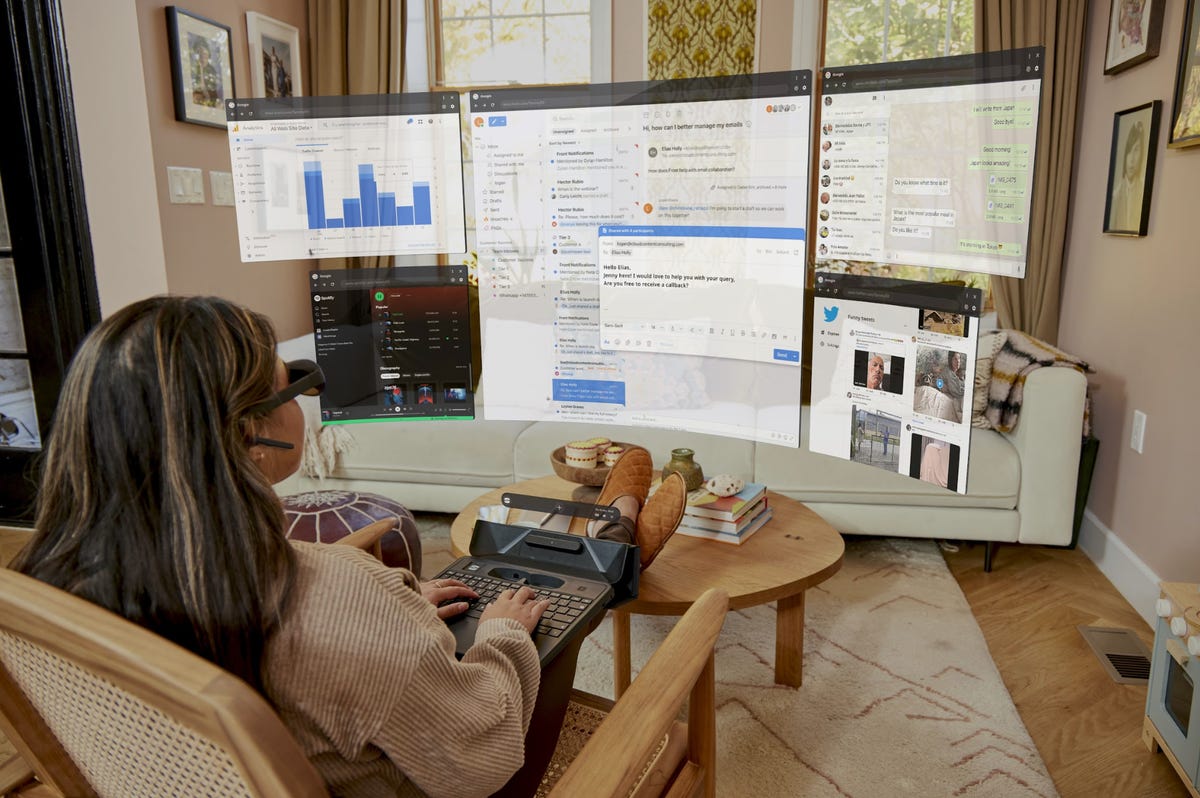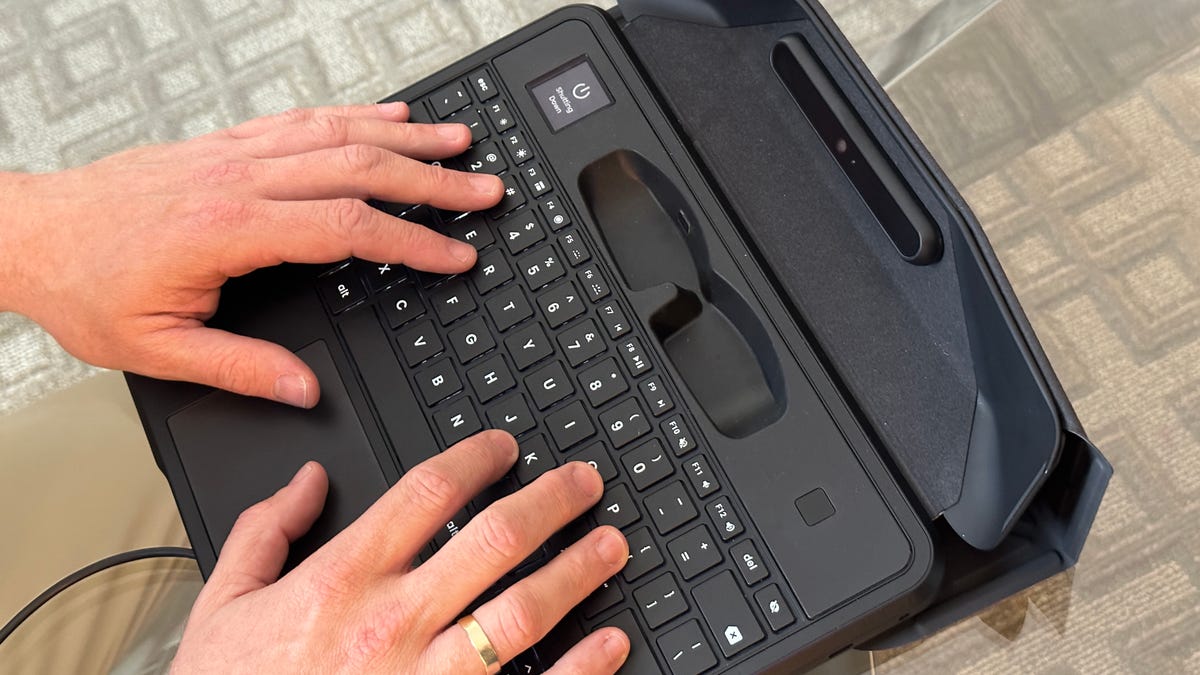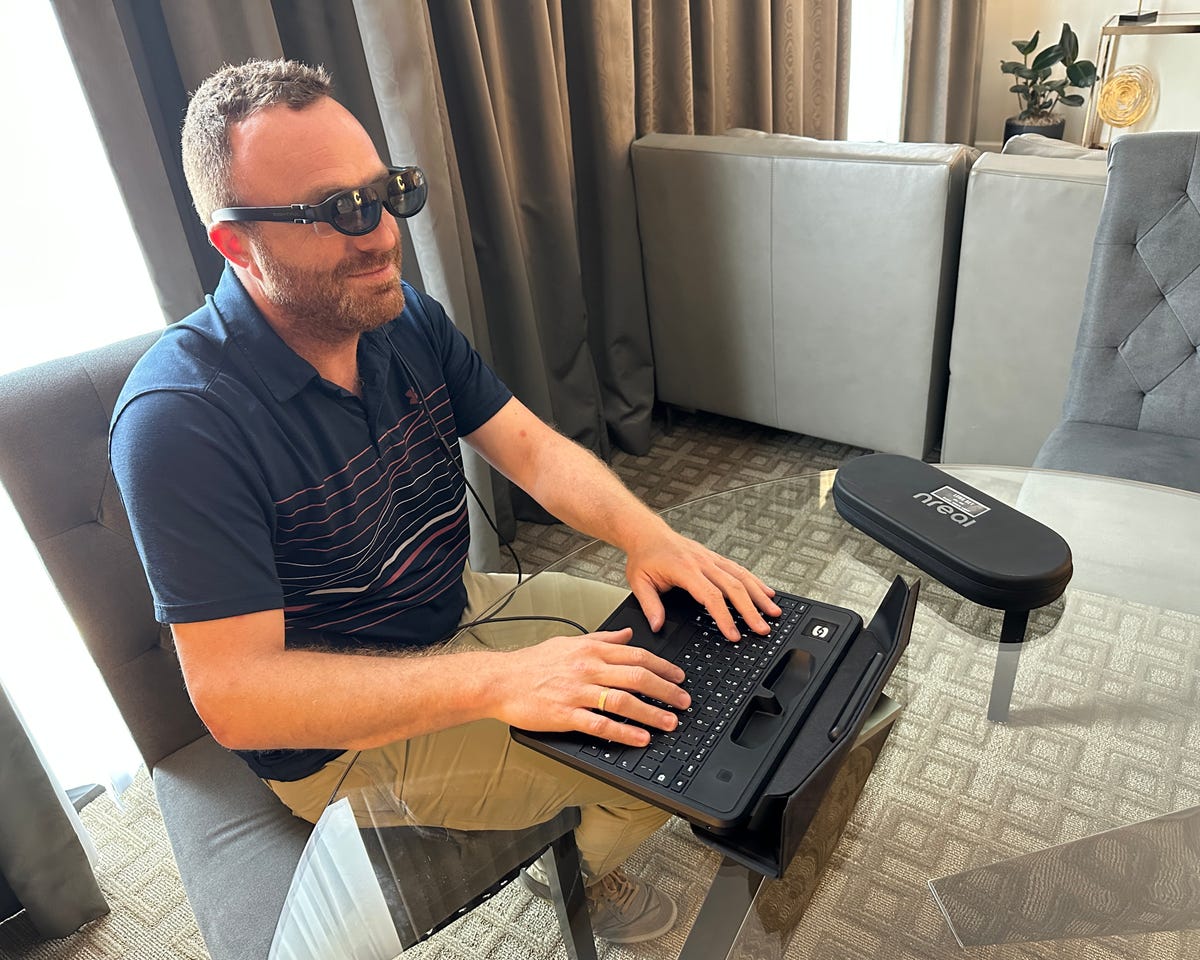A small keyboard and trackpad lies in my lap. But there’s no screen. Not that you can see, anyway. To me, I have a curved wraparound workspace with dozens of windows open. I’m seeing it on a pair of AR glasses (with prescription inserts) perched on my nose.
I first tried the Spacetop in Las Vegas back in January, but the company that developed it, Sightful, is finally announcing the early-access product experiment now. I’ve seen tons of AR and VR headsets, but very few unique peripherals designed to work together with these future goggles and glasses. Instead of gaming or social experiences, Spacetop’s main pitch is to turn laptops into AR-assisted devices with endless virtual displays.
If that sounds like a weird pitch, consider that I’ve already lived it. I’ve paired Meta’s Quest Pro to my laptop to extend its virtual monitors around my head, and plenty of solutions like this already exist using available apps. The interfaces can be clunky, and the hardware isn’t totally made to be mobile. Spacetop’s keyboard base, with its own Qualcomm processor inside, acts as a spatially tracked anchor that the AR glasses can follow and track the floating displays to. The tracking can work while in motion in a car or plane, and a button on the keyboard can make the floating displays vanish for an in-room conversation with someone, toggling the virtual screens on and off.

This visualization of working on Spacetop is actually very similar to the experience of using it, except the field of view at any time is smaller (imagine viewing through a narrower window).
The Spacetop comes with a pair of NReal Light AR glasses as part of its package, which need to be physically tethered to the keyboard to work. Sightful’s founders are planning for wireless options eventually, but found the tethered option more reliable for consistent tracking right now. Also, the whole concept could eventually work with other AR and mixed-reality headset hardware down the road.

The Spacetop’s keyboard. No screen, just a base. There’s a cradle for the AR glasses.
That would make sense, considering how many devices should be on their way: Apple’s, to start, and whatever Samsung, Google and Qualcomm are cooking up in the next year or so. NReal’s glasses are fine, but don’t work over my own glasses. Instead, I had to use prescription inserts, which Sightful will make for buyers of the hardware. The inserts I tried weren’t a perfect match, but were enough to appreciate that the display resolution was more than good enough for monitor readouts. The field of view, however, is narrower than most VR headsets: it can show something like a 40-inch TV screen as seen across a table, but I have to turn my head to see the other floating windows of other minimized browsers in the Spacetop’s Chrome-like software interface.

Sightful’s co-founder, Tomer Kahan, demoing Spacetop with me. I worked on it, too.
Zooming into displays, or scrolling around, is all done through trackpad and keyboard work. The keyboard itself is the interface.
Sightful’s team has experience in AR: Founders Tamir Berliner and Tomer Kahan came from Magic Leap, and Berliner also founded Primesense, the depth-sensing technology that powered Microsoft Kinect and which Apple acquired as the foundation to its Face ID TrueDepth camera.
As Apple’s headset begins to imagine how mixed reality could work with other devices — perhaps iPads, or the Apple Watch — upcoming glasses and goggles will start to imagine working better with phones or laptops, and other tools to come. It makes sense that new peripherals would arrive as well — not just controllers, but tracking rings, wearable trackers and a new wave of keyboards designed specifically for mixed reality.
I think Spacetop is a bit ahead of the curve here, and while it’s designed as a primary computer with its own headset, the future may belong to smart accessories that evolve from this idea to work with more headsets to come. If VR and AR are ever going to be more than just places for games, better work tools need to arrive. Spacetop is a pretty fascinating first step to what I imagine will be a lot more on this front.

